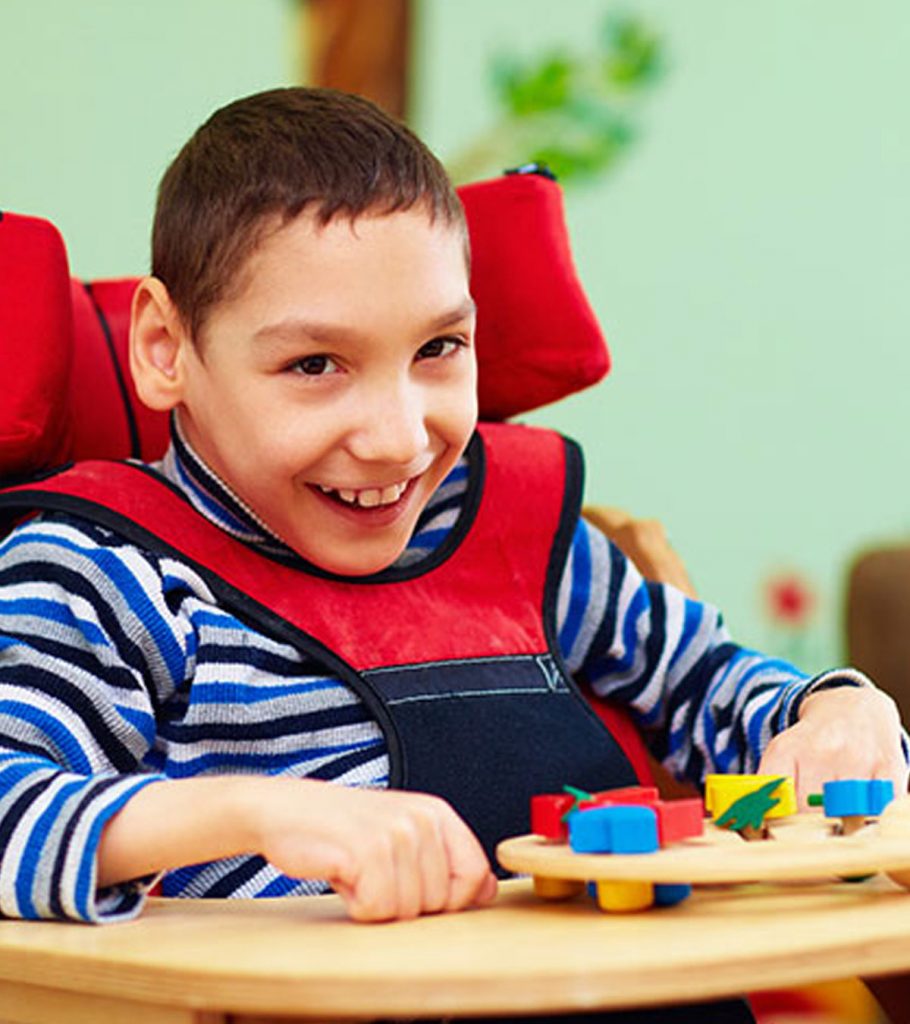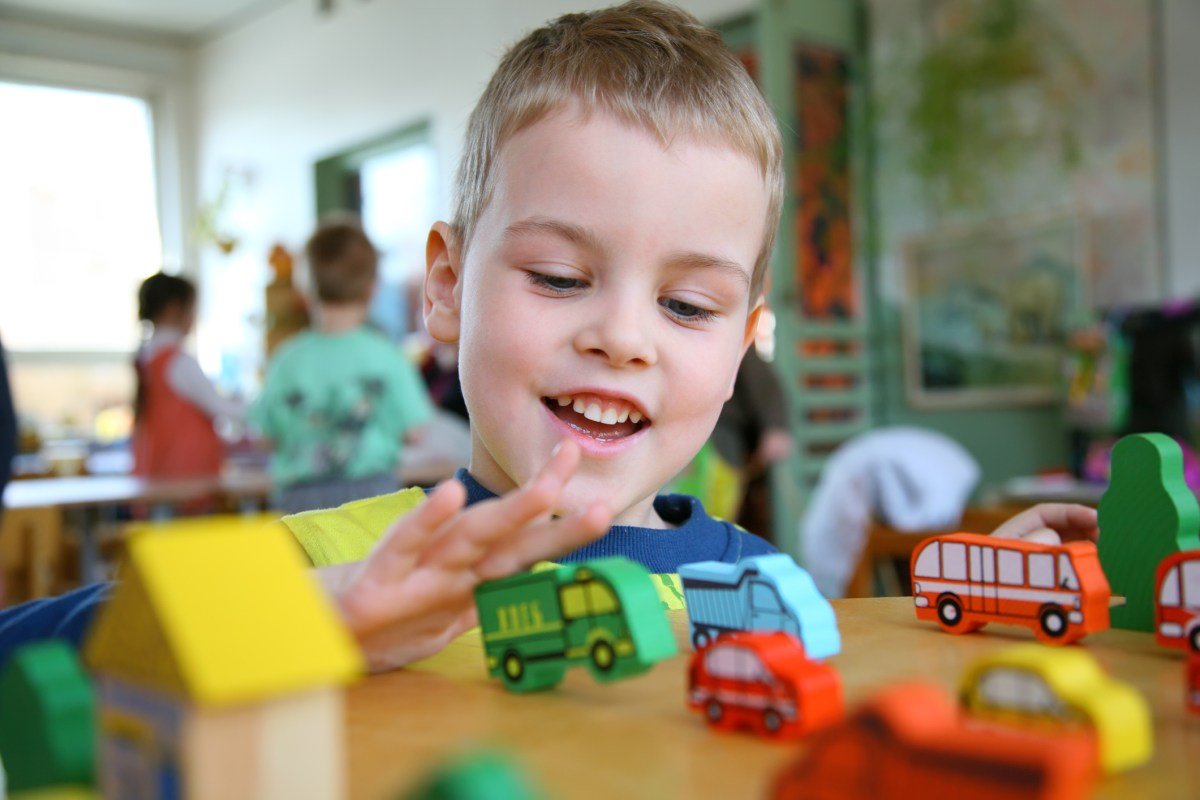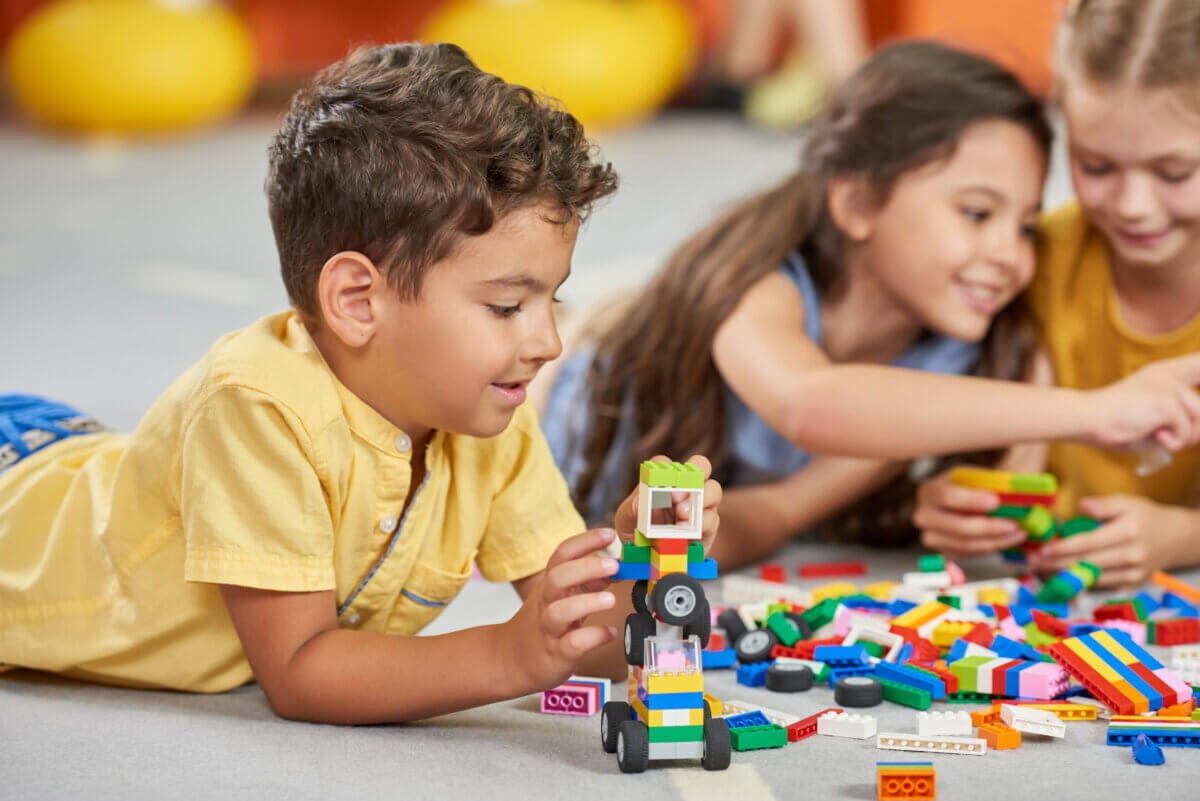Therapies And Supports To Improve Communication And Social Skills
Improved communication and social understanding can lead to lower anxiety and less challenging behaviour in autistic children and teenagers. There are many therapies and supports that might increase your childs skills in these areas, and help you manage your childs behaviour.
A good first step is talking with your childs GP, paediatrician or psychologist, or another health professional who works with your child. They can help you find appropriate therapies and supports for your child. Psychologists, speech pathologists and experienced Applied Behaviour Analysis practitioners can help you with behaviour management if the behaviour continues to be a problem or you need support to deal with it.
The Integrated Play Group Model
The Integrated Play Group Model, which is based on Vygotskys social constructivist theory, aims to improve the social and symbolic play skills of children with autism spectrum disorders ages 3 to 11. In addition to addressing skill deficits, the IPG model also emphasizes developing the intrinsic desire to play. According to Wolfberg and Schuler , in the IPG model, Play development is fostered by physically arranging the environment to bring about the most competent forms of play, and by guiding participation within these environments while capitalizing upon child initiations. It is important to differentiate between social skills training which involves direct skill instruction, and IPG which provides a support system for a childs initiations.
Fun Games For Autistic Child:
Children with autism go through various difficulties every day. They have difficulty in understanding human relationships and intimacy. You can take them out and soak them in the sun and notice a significant change in their behavior. Try the below outdoor and indoor games for autistic kids of all ages.
Recommended Reading: How To Improve Sitting Tolerance In Autism
What Are Some Simple Things I Can Use For Engagement
There are many simple items you can use to engage a child like:
Balloons Bounce them around or blow them up and deflate them. Bubbles There are so many types available different wands, bubble machines. This is a great activity to wait for a child to ask/gesture for more bubbles. My daughter used to sign more before she could speak to keep bubble blowing going.Cause and Effect Toys a jack-in-the-box, press a button and something happens. These types of toys also teach children that their actions have effects and gives them a sense of control in their play.Blocks Playing with blocks encourages turn taking. Build a tower with each person adding a block until it falls down. The parent can build a tower and the child knocks it down. My son loved this one!Simple Puzzles Puzzles are also great for turn taking. Chunky puzzles with knobs on the top can make handling pieces easier. Puzzles also help with problem solving skills.Books Books with interactive sounds, pop-up books, books with textures, or books with things to do like pull a tab or spin a wheel are all very engaging.
Suggested Readings And Websites

Greenspan, S. I., & Weider, S. . The Child with Special Needs: Encouraging Intellectual and Emotional Growth. Reading, MA: Addison-Wesley.
Greenspan, S. I., & Wieder, S. Developmental patterns and outcomes in infants and children with disorders in relating and communicating: A Chart Review of 200 Cases of Children with Autistic Spectrum
Diagnoses. World Wide Web: www.icdl.com
Integrated Play Groups: .
Wolfberg, P. J. . Play and Imagination in Children with Autism. New York, NY: Teachers College Press – Columbia University.
Wolfberg, P. J. . Enhancing childrens play. In K. A. Quill , Teaching Children with Autism: Strategies to Enhance Communication and Socialization . Albany, NY: Delmar Publishers.
Wolfberg, P. J., & Schuler, A. L. . Integrated play groups: A model for promoting the social and cognitive dimensions of play in children with autism. Journal of Autism and Developmental Disorders, 23, 467-489.
Lantz, J. . Play time: An examination of play intervention strategies for children with autism spectrum disorders. The Reporter, 6, 1-7, 24.
Don’t Miss: Is Freddie Highmore Actually Autistic
Incorporate Favourites Into Any Activity
Many children with autism have topics, items, characters, and other things that they are particularly interested in. You can take advantage of these favourites by creatively embedding them into almost any active endeavor or activity.
Does your child love trains? Pretend that a forest path is a train track and the whole family can pretend to be trains as they chug through the trees. Are they particularly interested in a certain TV show? Make a scavenger hunt with pictures of different characters hidden around your backyard, and an instruction of a silly action to do when each character is found.
Are they interested in animals? Make up some yoga poses or stretches that represent some of his favourite animals!
Chat With Your Local Community Centre And Work Together With Instructors
Increasingly, community centres have mandates to support access to recreation for people of all ages and abilities. If you have found an activity that you think your child might enjoy, dont be afraid to talk to staff at the community centre and let them know what you think might be needed in order to allow your son or daughter to participate.
Instructors may not automatically know how to adapt a particular class, but often are more than willing to take your suggestions or advice in order to make things accessible and successful.
You May Like: Heritability Of Autism
Accept The Child Fully
Some children with autism seem neurotypical until about age 2, and then they lose skills theyve gained. Its distressing for many adults. You saw the child a year or so ago progressing on course, and now the child seems so much different.
Dont judge the child by past behavior or development. Look for things to enjoy about the child right now. The sweet smile you love, their beautiful blue eyes, and their gentle personality may remain, even if verbal skills decline. Accept the child the way they are right now.
What Is Play Therapy
Kids use play to learn a variety of skills as they grow and develop. Engaging in regular play develops fine and gross motor skills, encourages creativity, problem-solving, and cognitive thinking skills, helps build a childs independence, develops social and language skills, and offers lots of emotional and behavioral benefits. Play can also help boost a childs self-esteem, reduce feelings of anxiety, develop relationships with their peers, and develop appropriate self-regulation and self-control.
Play therapy is a type of counseling geared toward children, and as the name suggests, it uses play to communicate with kids to help prevent and resolve psychosocial issues and challenges. It can also be used to diagnose or determine the cause of any disturbed behavior a child might exhibit, and help them work through anxiety, trauma, etc.
You May Like: What Is The Symbol For Autism
Don’t Take Things Personally
Children with autism may not respond in a manner you understand or expect. They may walk away from you, ignore you, or have a tantrum.
Its easy to have hurt feelings, but do your best to keep your emotions in check. The child is working hard to adjust to your expectations and your reality. Be as flexible as you can, and keep trying to form that connection.
If Possible Use A Schedule To Let The Child Know How His Day Will Go
For children who have trouble reading or understanding language, a visual schedule would be best. A schedule for after school could include eating a snack, doing homework, watching TV, playing a game with the family, reading a book, taking a bath and going to bed. A visual schedule at school could include math, reading, gym, lunch, recess, art, science, packing up, and getting on the bus. Below is an example of a visual schedule:
See How to Use Schedules to Improve Childrens Behavior for more on getting the materials for and utilizing first/then boards and visual schedules.
Don’t Miss: Aspergers Prognosis
Underwater I Spy Alphabet Bottle:
Sparkling water is one such activities for children with autism social skills to attract. Here is a great alphabet bottle activity that helps to keep your little one focused and engaged. Your kids can recognize letters in a creative manner through the shiny floating sequins.
You Will Need:
- Glue gun
How To Do:
Lack Of Social Communication Skills

In order to be successful in pretend play and imitation, typically-developing children actively seek out engagement and communication and quickly learn how to “read” the intentions of other people.
Children with autism tend to be self-absorbed, and have little desire or ability to communicate or engage with playmates. Peers may see this behavior as hurtful , or may simply ignore the child with autism. In some cases, children with autism are bullied, scorned, or ostracized.
Read Also: Symmetra Hindi Voice Lines
Create A Sensory Collage:
Children with Autism can often find distinct textures and sensations overwhelming. Ease your kid in to more messy activities by making a tactile collage with a small selection of new materials such as aluminum foil, glitter and magazine clippings. Over time your preschooler may enjoy being introduced to a wider range of textures.
Our Really Easy Play Routine
The point of the routine is to keep it the same, I would initially try it once a week for 6 weeks and see how you get on. My inspiration for this comes from the portage support we got from our local childrens centre. A support worker would come for an hour a week and play with my son, it would be the same every week and he would get really excited when he knew what was coming next.
A visual schedule showing your play routine is key to implementing the routine easily. Here is a copy of this one which you can use or adapt to your own routine:
Read Also: What Is The Life Expectancy Of People With Autism
Where Do I Start
The first thing to start with is developing joint attention. Joint attention means both the adult and the child are fixed on the same thing at the same time, experiencing the same reaction and awareness that both people are involved. This process takes time to develop in ASD. Being with creating a sense of shared space sharing attention, emotion and understanding.
Young autistic children tend to avoid sharing space, finding it uncomfortable. Its important for parents to understand the joint play can cause feelings of anxiety and to not take avoidance personally. Try to start with sharing space, even if just for a few seconds, to show that it can be fun.
Try making a few informal notes when observing your child. Record when are they most accessible and receptive maybe during a bath, when you sing, relaxed in bed, eating something they love, or engaged in some physical activity. These are the moments to show that communication means something.
Some ideas to try:
Expand Your Childs Interests
Children with autism tend to have hyper-focused interests, sometimes in things that are of no interest at all to other children. While you can encourage other children to play with what interests your child, ultimately her choice of playmates will be limited if shes unwilling to play with anything else. In 5 Reasons to Help Your Child with Autism Expand His Interests we give you simple steps to help your child learn to be interested in new things.
You May Like: Fragile X Vs Autism
If The Child Seems Over Stimulated From Sensory Input Such As In A Large Crowd Bring Him To A Quieter Place To De
Be mindful of situations where your child might feel overwhelmed before you take him there .
There are also strategies to create an environment that helps a child with autism feel less overwhelmed by sensory input. See How to Set Up the Classroom for Children with Autism and ADHD which includes strategies that can be used at home as well.
Some Children Thrive When Given Structured Hands
Many children I have worked with or have observed, did very well when given a hands-on/visual activity. Examples include playing a computer game, sorting objects by color or object type completing a puzzle, constructing a model car, tracing or coloring in a picture, etc. As another example, some teachers of children with autism teach academic skills through sorting tasks. For instance, an activity about learning colors would require the child to put all the yellow chips in a yellow cup, all the blue chips in a blue cup, etc. Keeping a child focused with an activity they do well at is a great way to encourage calm behavior. However, if the child is feeling overwhelmed or frustrated from the activity, allow a break or a change in the task.
You May Like: Does Gestational Diabetes Cause Autism
Activities Teaching Strategies And Resources For Teaching Children With Autism
Because approximately 1 in 59 students are diagnosed with autism, learning how to help students with this disorder in the classroom is so important. Teaching young students with autism communication skills and learning strategies makes it all the more likely that theyll reach their academic potential later on. And the more you learn about autism spectrum disorder, the better youll be able to prepare these students for lifelong success.
Autism spectrum disorder is a developmental disability that causes hypersensitivity to sights, sounds, and other sensory information. Symptoms of autism generally fall into three categories:
- Communication issues
- Social impairment
- Repetitive behaviors
Here are 15 fun activities to help children with autism feel welcome in your class while addressing their symptoms and individual learning styles. Whether you play them one-on-one or as group activities, these are excellent ways to keep students with autism engaged and ready to learn.
Offer Accommodations For Students With Limited Motor Skills

Some students with autism may have more trouble with activities that require fine motor skills than others. In an article with the Indiana Resource Center for Autism, renowned scientist and advocate Dr. Temple Grandin suggests offering accommodationslike typing on a computer instead of writingto mitigate these challenges.
When it comes to specific accommodations, it may depend on the individual. Its always a good idea to reach out to a students family to determine the best resources for their child.
You May Like: What Is The Life Expectancy Of People With Autism
Dont Wait For A Diagnosis
As the parent of a child with ASD or related developmental delays, the best thing you can do is to start treatment right away. Seek help as soon as you suspect somethings wrong. Dont wait to see if your child will catch up later or outgrow the problem. Dont even wait for an official diagnosis. The earlier children with autism spectrum disorder get help, the greater their chance of treatment success. Early intervention is the most effective way to speed up your childs development and reduce the symptoms of autism over the lifespan.
When your child has autism
Learn about autism. The more you know about autism spectrum disorder, the better equipped youll be to make informed decisions for your child. Educate yourself about the treatment options, ask questions, and participate in all treatment decisions.
Become an expert on your child. Figure out what triggers your kids challenging or disruptive behaviors and what elicits a positive response. What does your child find stressful or frightening? Calming? Uncomfortable? Enjoyable? If you understand what affects your child, youll be better at troubleshooting problems and preventing or modifying situations that cause difficulties.
Dont give up. Its impossible to predict the course of autism spectrum disorder. Dont jump to conclusions about what life is going to be like for your child. Like everyone else, people with autism have an entire lifetime to grow and develop their abilities.
How To Support A Child With Autism In The Classroom
Below is a letter by Mrs. Kamini Lakhani, who founded Support for Autistic Individuals in 2004 in Mumbai, India. Kamini is the mother of a young adult with autism and has been providing services in the field of autism for more than 20 years. The post originally appeared on the SAI website here.
We met at a party. She was young and vivacious. We hit it off immediately as we both were from the education field.
She was a 4th grade teacher. As soon as she heard that I worked with people with autism, a barrage of questions and comments followed. You see, she was teaching a child with autism in one of her classes.
Its impossible to handle him.
Hes totally disruptive and creates a ruckus in my class.
What an attention seeker!
Do you think he should be attending regular school?
He cant sit still, even for a moment.
I dont think hes capable of learning.
His mother is so demanding and she overestimates her childs abilities.
Dear Teacher,
First, Id like to commend you for taking up this profession. You had a choice of other more lucrative careers but you chose to take up this noble profession. Im certain that your intent was to make a difference in the lives of children. But here is this one student, who you cant handle, who makes you uncomfortable, and creates a storm in your classroom. Secretly, you wish he wasnt in your class.
Here are five things you can do immediately to teach children with autism better.
Heres something beautiful for you.
Kamini
Recommended Reading: Aspergers Life Span